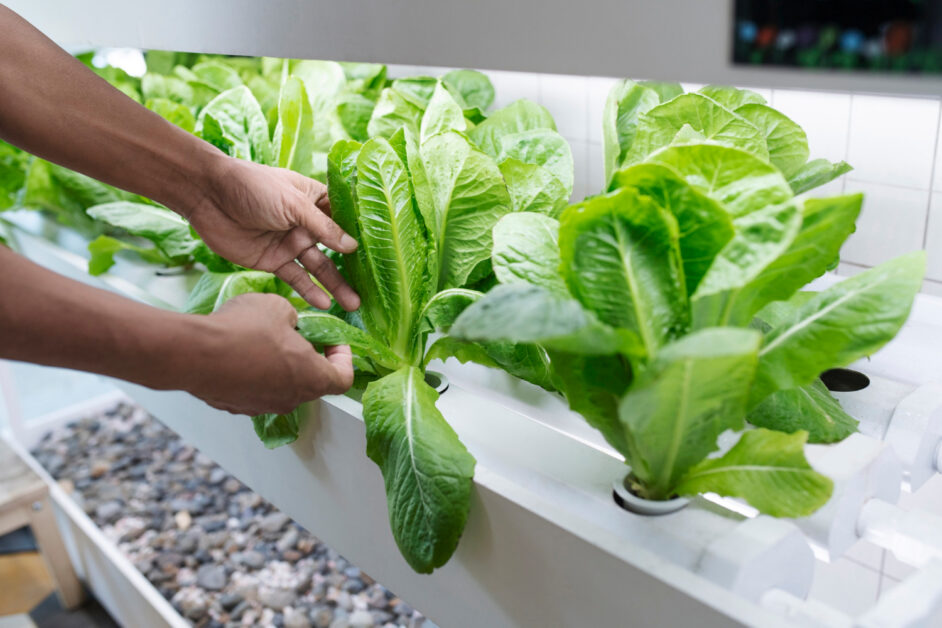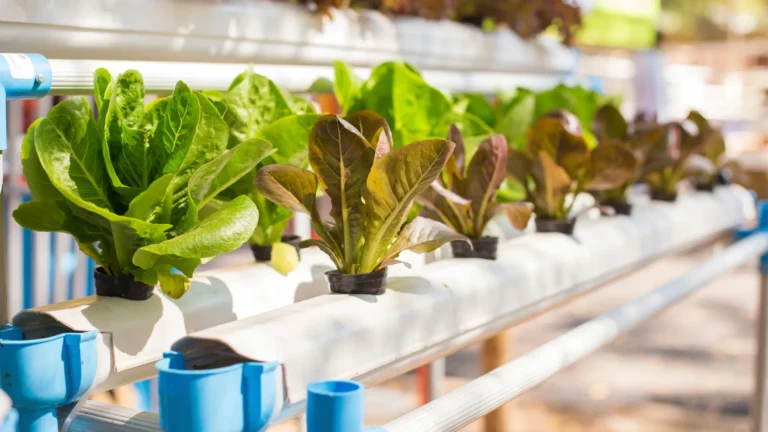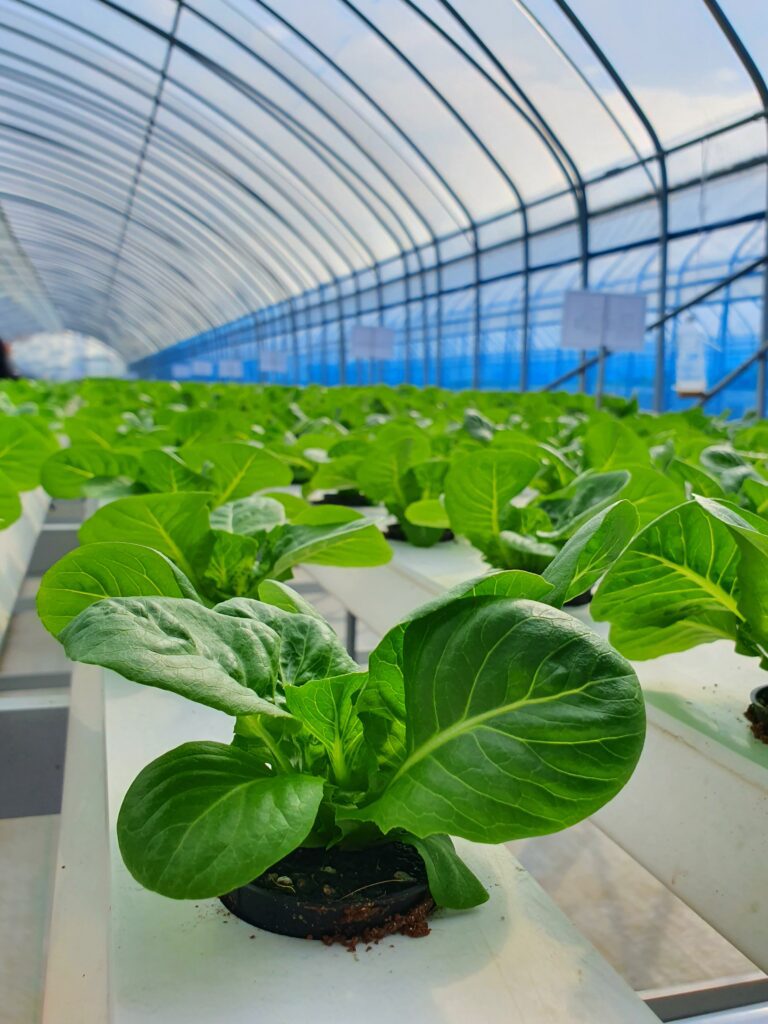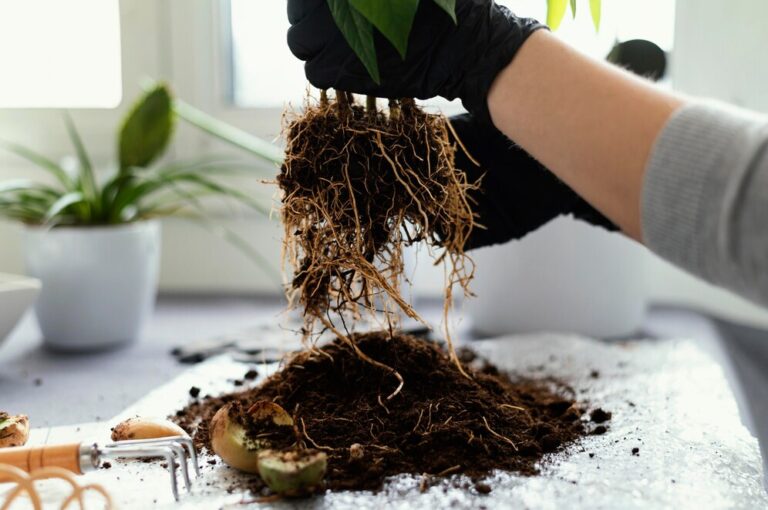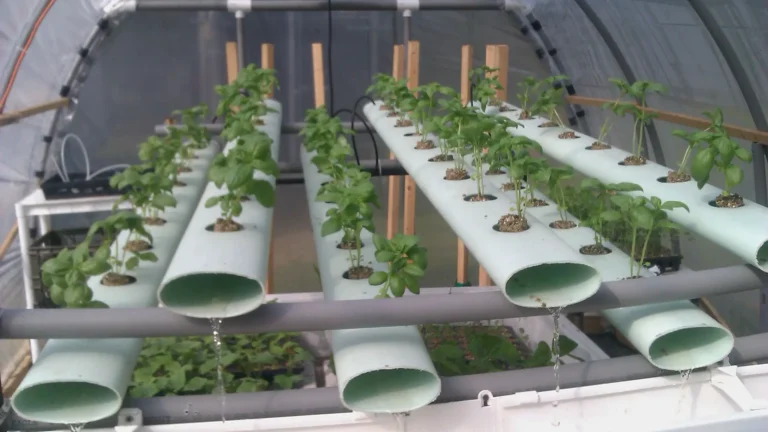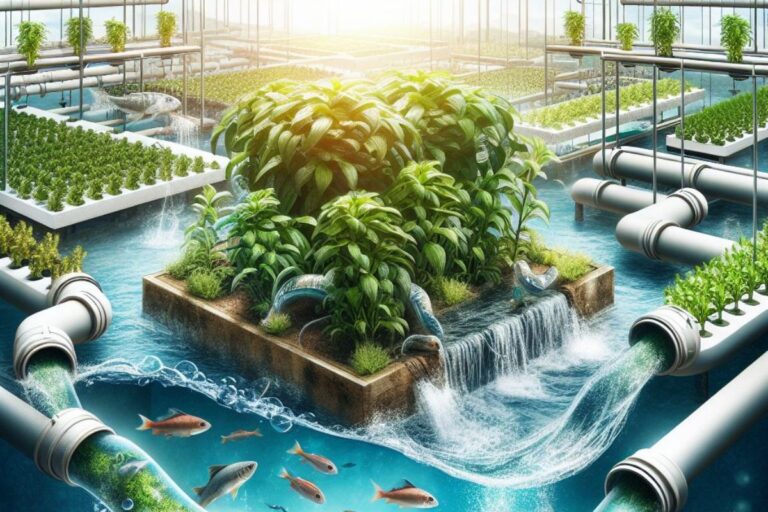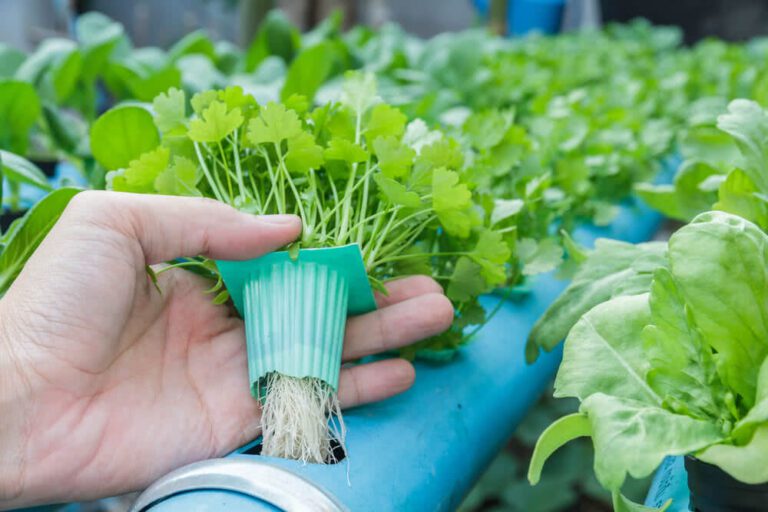Hydroponic Cabbage: How to Grow Crisp and Nutritious Cabbage in Water
Table of Contents
Understanding Hydroponics: An Innovative Approach to Cabbage Cultivation
Hydroponics has emerged as an innovative approach to cabbage cultivation, revolutionizing the way gardeners grow this popular vegetable. Unlike traditional soil-based methods, hydroponics involves growing plants in a nutrient-rich water solution without the use of any soil. This method offers numerous advantages, making it a preferred choice for gardening enthusiasts.
One key benefit of hydroponic cabbage cultivation is the superior taste and nutritional value that it offers. By providing precise control over nutrient levels and environmental conditions, hydroponics ensures that the cabbage plants receive optimal nutrition, resulting in flavorful and nutrient-rich harvests. In addition, the absence of soil eliminates the risk of contaminants and pests, further enhancing the quality and safety of the produce. Moreover, hydroponics allows for year-round cultivation, allowing gardeners to enjoy fresh and healthy cabbage regardless of seasonal limitations.
Intriguing, isn’t it? Let’s explore further to understand the various aspects of hydroponic cabbage cultivation and how to set up an ideal system for achieving successful yields.
The Benefits of Hydroponic Cabbage: Superior Taste and Nutritional Value
Hydroponic cabbage offers a range of benefits that make it a superior choice in terms of taste and nutritional value. One of the primary advantages of hydroponically grown cabbage is that it tends to have a more pronounced and satisfying flavor compared to conventionally cultivated cabbage. The controlled environment in which hydroponic plants are grown allows for precise management of factors such as nutrient levels, pH, and light exposure, resulting in cabbage that is bursting with flavor.
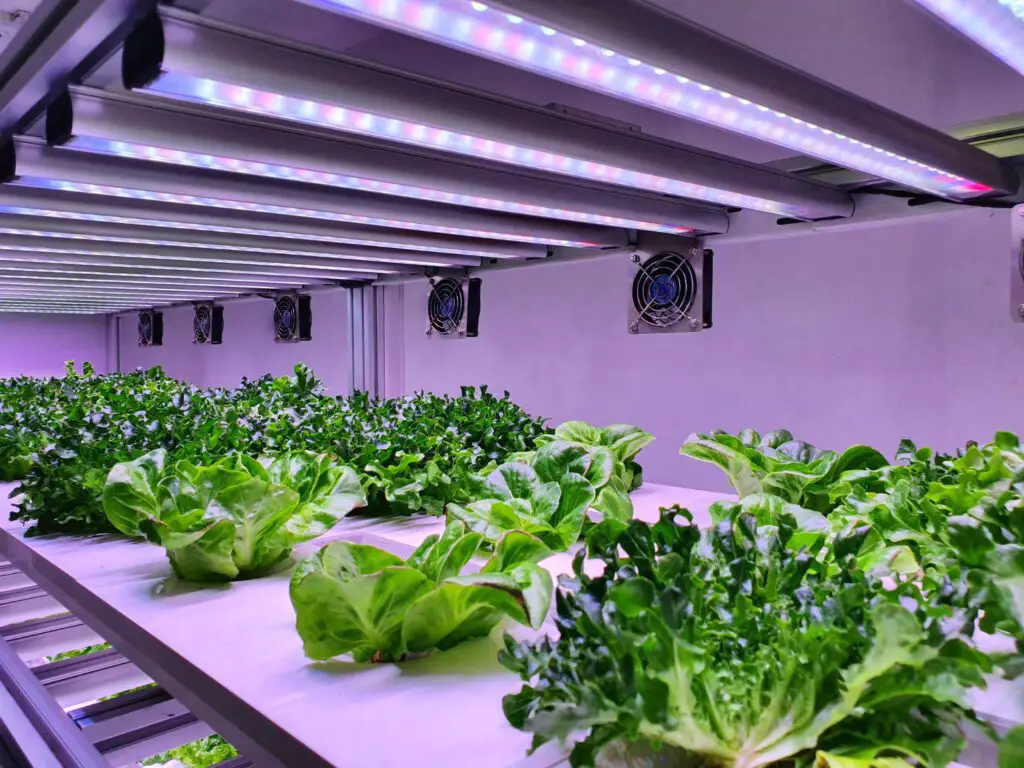
In addition to its exceptional taste, hydroponically grown cabbage also boasts higher nutritional value. Research has shown that hydroponic cultivation methods can enhance the nutrient content of plants, and cabbage is no exception. Studies have found that hydroponically grown cabbage contains higher levels of essential vitamins and minerals, including vitamin C, vitamin K, and potassium, compared to conventionally grown cabbage. These nutrients are vital for maintaining good health and supporting various bodily functions, making hydroponic cabbage a nutritious addition to any diet.
Selecting the Right Cabbage Varieties for Hydroponic Cultivation
When it comes to selecting the right cabbage varieties for hydroponic cultivation, there are a few key factors to consider. First and foremost, you want to choose varieties that are well-suited for indoor growing conditions. Since hydroponics provides a controlled environment, it opens up a wider range of possibilities for cabbage varieties that may not thrive in traditional soil-based cultivation.
One important characteristic to look for is a compact growth habit. Cabbage plants in hydroponics tend to grow more closely together compared to traditional gardens, so selecting compact varieties helps maximize space and prevent overcrowding. Additionally, consider varieties that have a shorter maturation time, as this will allow for a more efficient rotation and continuous harvest throughout the year. Finally, look for varieties that are disease-resistant, as hydroponic systems can sometimes create ideal conditions for pests and diseases to thrive. By selecting disease-resistant varieties, you can minimize the risk of crop loss and ensure a successful cabbage harvest in your hydroponic garden.
Some popular varieties of cabbage to grow hydroponically include:
- Dynamo: A green cabbage that is resistant to both disease and splitting.
- Fargo: A green cabbage that matures quickly and has a sweet flavor.
- Primax: A green cabbage that is split-resistant and produces large, dense heads.
- Red Express: A red cabbage that matures fast and has a mild taste.
- Savoy: A type of cabbage that has crinkled leaves and a tender texture.
- Ballhead: A type of cabbage that forms round, compact heads that can be green, red, purple, or white.
- Loose-leaf: A type of cabbage that does not form heads, but has loose, curly leaves that can be harvested at any stage.
Setting Up the Ideal Hydroponic System for Cabbage Growth
When it comes to setting up the ideal hydroponic system for cabbage growth, there are a few key factors to consider. Firstly, you need to choose the right type of hydroponic system. While there are various options available, such as nutrient film technique (NFT) or deep water culture (DWC), a popular choice for cabbage cultivation is the nutrient film technique. This system involves a continuous flow of nutrient-rich water running over the plant roots, providing them with a constant supply of essential nutrients.
In addition to selecting the appropriate hydroponic system, you also need to ensure that your cabbage plants receive adequate support. Cabbage is a leafy vegetable that can grow quite large and heavy, so it’s essential to provide sturdy support structures such as trellises or stakes. This will prevent the plants from collapsing under their own weight and will promote upright growth, allowing for better access to light and air circulation. By setting up a hydroponic system that supports the growth of your cabbage plants, you’re laying the foundation for successful and healthy cultivation.
Providing the Essential Nutrients for Healthy Cabbage Plants
To ensure the healthy growth of cabbage plants in a hydroponic system, providing the essential nutrients is crucial. Unlike traditional soil-based cultivation, hydroponics relies on nutrient-rich solutions that are directly supplied to the plants. These solutions consist of carefully calibrated amounts of nutrients, ensuring that the cabbage plants receive all the essential elements required for their optimal development.
The key nutrients involved in hydroponic cabbage cultivation include nitrogen, phosphorus, and potassium, commonly known by their chemical symbols NPK. Nitrogen is responsible for promoting leafy growth and vibrant green color in cabbage plants. Phosphorus aids in root development, flower production, and fruit formation. Potassium, on the other hand, supports overall plant health and disease resistance. Other essential nutrients include calcium, magnesium, and trace minerals like iron, manganese, and zinc.
The table below lists the nutrients required for growing hydroponic cabbage at different stages of life cycle
| Stage | Nutrients | PPM | EC | pH |
|---|---|---|---|---|
| Seedling | Nitrogen, phosphorus, potassium, calcium, magnesium, sulfur, iron, zinc, manganese, boron | 560-980 | 0.8-1.4 | 6.2-6.6 |
| Vegetative | Nitrogen, phosphorus, potassium, calcium, magnesium, sulfur, iron, zinc, manganese, boron | 1960-2450 | 2.8-3.5 | 6.0-6.5 |
| Flowering | Phosphorus, potassium, calcium, magnesium, sulfur, iron, zinc, manganese, boron | 1400-1960 | 2.0-2.8 | 6.0-6.5 |
| Fruiting | Phosphorus, potassium, calcium, magnesium, sulfur, iron, zinc, manganese, boron | 1120-1400 | 1.6-2.0 | 6.0-6.5 |
Maintaining the correct nutrient balance is imperative for healthy cabbage plants. The nutrient solution should be regularly monitored and adjusted, taking into account the growth stage of the plants. Nutrient deficiencies can lead to stunted growth, yellowing leaves, and decreased crop yield. On the other hand, excess nutrients can result in nutrient burn, affecting plant health and vitality. By closely monitoring and adjusting the nutrient levels, hydroponic growers can ensure that their cabbage plants receive the optimal nutrition for robust growth and bountiful harvests.
Maintaining the Optimal pH Levels in Your Hydroponic Cabbage System
Maintaining the optimal pH levels in your hydroponic cabbage system is crucial for the health and productivity of your plants. Hydroponics, as a soilless growing method, relies heavily on the precise management of nutrient solutions, including pH levels. Cabbage plants, in particular, thrive in a slightly acidic environment with a pH range of 5.5 to 6.5.
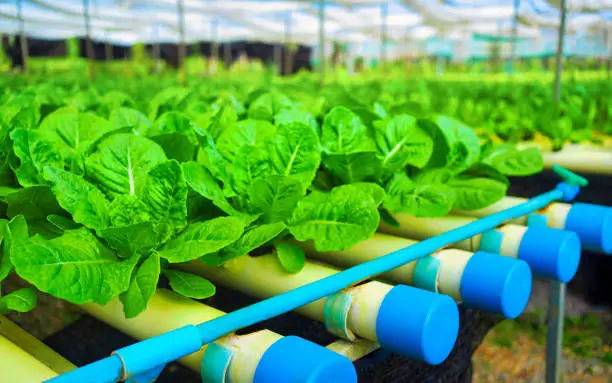
To ensure the pH levels stay within the recommended range, regular monitoring is essential. Using a pH meter or pH testing kit, measure the acidity or alkalinity of the nutrient solution. If the pH deviates from the ideal range, adjustments need to be made. To lower the pH level, you can introduce acid-based products specifically formulated for hydroponic systems, such as phosphoric acid. Conversely, to raise the pH level, alkali-based products like potassium hydroxide can be added. Careful attention should be paid to the dosage and gradual adjustment to prevent sudden pH fluctuations that could stress the plants.
Maintaining the optimal pH levels in your hydroponic cabbage system benefits your plants in various ways. Firstly, a balanced pH level increases nutrient availability, ensuring that cabbage plants receive the necessary elements for healthy growth. Additionally, a suitable pH range promotes efficient nutrient absorption, preventing deficiencies or toxicities that may impair plant development. By carefully monitoring and adjusting pH levels, you can create an environment that maximizes nutrient uptake and supports vigorous growth in your hydroponic cabbage garden.
Managing Water Quality in Hydroponic Cabbage Cultivation
Water quality is an essential factor to consider when cultivating cabbage hydroponically. The quality of water used in the hydroponic system can greatly impact the overall health and growth of the cabbage plants. It is important to ensure that the water used is free from contaminants and possesses the necessary nutrients for the plants to thrive.
One key aspect of managing water quality is monitoring the pH levels. Cabbage plants prefer a pH range between 5.5 and 6.5 for optimal growth. Deviations from this range can lead to nutrient deficiencies, affecting the plant’s ability to absorb vital elements. Regularly testing the pH levels and making adjustments as needed will help maintain a suitable environment for cabbage cultivation. This can be achieved by adding pH adjusters or buffering agents to the water, ensuring that the pH remains within the desired range.
Another crucial factor in hydroponics cabbage is EC or electrical conductivity. the requirements are as follows:
| Growth Stage | Age (Weeks) | EC Range (mS/cm) |
|---|---|---|
| Seed Germination | 1-2 | 0.5 – 1.0 |
| Seedling | 2-3 | 1.0 – 1.5 |
| Vegetative | 3-6 | 1.2 – 2.0 |
| Pre-flowering | 6-8 | 1.5 – 2.5 |
| Flowering | 8-10 | 2.0 – 3.0 |
| Fruiting | 10+ | 2.0 – 3.5 |
| Harvest | Varies | Maintain |
NOTE:
- The age in weeks is a general guideline, and actual growth rates may vary based on specific cabbage varieties, growing conditions, and environmental factors.
- EC values are given in mS/cm (millisiemens per centimeter). Adjustments may be necessary based on your specific system and the results of regular nutrient solution monitoring.
- Always start with a lower EC level and gradually increase it while monitoring plant response to avoid nutrient-related issues.
- The harvest stage may vary based on whether you are growing cabbage for leaves or heads. Adjust nutrient levels accordingly during this phase.
Another important aspect of water management is maintaining proper oxygenation. Oxygen is crucial for the roots’ health and overall nutrient absorption. In hydroponic systems, the roots are submerged in water, which can limit oxygen availability. To address this, oxygenation techniques such as the use of air stones, oxygen pumps, or aerators can be employed. These methods introduce oxygen into the water, promoting healthy root development and ensuring the efficient uptake of nutrients by the cabbage plants.
By diligently managing water quality in hydroponic cabbage cultivation, growers can optimize the growth and development of their plants. Regular monitoring of pH levels and proper oxygenation will help provide the ideal conditions for the cabbage plants to thrive and produce an abundant harvest.
Controlling Temperature and Humidity for Successful Cabbage Growth
Maintaining the ideal temperature and humidity levels is crucial for the successful growth of cabbage in a hydroponic system. Cabbage plants thrive in cooler conditions, with temperatures ranging between 60-70 degrees Fahrenheit (15-21 degrees Celsius). To achieve this, it is recommended to use an air conditioning or cooling system to regulate the temperature in the growing area.
In addition to temperature, managing humidity is equally important. The ideal humidity range for cabbage cultivation is between 50-70%. High humidity levels can promote the growth of fungal diseases, such as powdery mildew, while low humidity can lead to stunted growth and wilting. To maintain optimal humidity, it is recommended to use a dehumidifier or a humidifier depending on the prevailing conditions. Regular monitoring of humidity levels using a hygrometer will ensure timely adjustments to create the perfect environment for cabbage plants to flourish.
By controlling both temperature and humidity in your hydroponic cabbage system, you can create an optimal growing environment that promotes healthy growth and enhances the overall quality of your cabbage crop.
Ensuring Sufficient Lighting for Cabbage Plants in a Hydroponic Set-up
To ensure the optimal growth and development of cabbage plants in a hydroponic set-up, providing sufficient lighting is crucial. Light is essential for photosynthesis in plants, a process where they convert light energy into chemical energy to fuel their growth. In a hydroponic system, where plants are grown without soil, it is important to mimic natural sunlight using artificial lighting sources.
When it comes to lighting for cabbage plants in hydroponics, the intensity, duration, and quality of light are all important factors to consider. Cabbage plants require around 12 to 16 hours of light per day, mimicking the longer daylight hours of the summer season. Providing a consistent light cycle is essential for maintaining healthy growth patterns and preventing any interruption in the plant’s metabolic processes.
LED (Light Emitting Diode) lights are highly recommended for hydroponic cabbage cultivation. Not only do they consume less energy and produce less heat compared to other lighting options, but they also provide a balanced spectrum of light that closely resembles natural sunlight. LED lights can be tailored to meet the specific light requirements of cabbage plants at each stage of growth, promoting photosynthesis, chlorophyll production, and overall plant vigor.
When selecting LED lights for your hydroponic cabbage set-up, it is important to consider the light output, color temperature, and the specific needs of cabbage plants. Higher light intensities are generally required during the vegetative stage, while slightly lower intensities are suitable during the reproductive stage. Blue light promotes leafy growth, while red light stimulates flowering and fruiting. Using a combination of both blue and red LED lights can provide an optimized spectrum for cabbage plants at different growth stages.
In the next section, we will explore the process of germinating cabbage seeds and transplanting seedlings in a hydroponic system, ensuring a strong start for your cabbage plants. With the right lighting setup, your hydroponic cabbage garden will flourish and provide you with nutritious and delicious greens for you and your family.
Germinating Cabbage Seeds and Transplanting Seedlings in Hydroponics
To successfully germinate cabbage seeds and transplant seedlings in a hydroponic system, it is crucial to ensure optimal conditions for growth. One key aspect is the selection of high-quality seeds. Look for cabbage varieties that are suitable for hydroponic cultivation and have a high germination rate. It is also advisable to choose disease-resistant varieties to minimize the risk of crop loss.

Before sowing the seeds, carefully prepare the germination medium. This can be done by using a sterile medium such as rockwool cubes or trays. Ensure that the medium is thoroughly soaked with water and excess water is drained to avoid waterlogging. Sow the cabbage seeds at the recommended depth in the germination medium and cover them lightly with the medium. Maintaining adequate moisture levels during germination is essential. Mist the seeds daily or cover them with a humidity dome to create a greenhouse-like environment that promotes germination. Within a week or two, the cabbage seeds should sprout, and the seedlings will be ready for transplantation.
Transplanting cabbage seedlings from the germination medium to the hydroponic system requires careful handling to prevent any damage to the delicate roots. Prior to transplanting, ensure that the hydroponic system is set up correctly and the nutrient solution is prepared. Gently remove the seedlings from the germination medium, holding them by the leaves or true stem rather than pulling them by the delicate seedling stem. Place the seedlings into the pre-dug holes or slots in the hydroponic grow beds or raft system. Firmly press the medium around the roots to provide stability, making sure that the crown of the seedling is at the same level as the growing medium’s surface. Finally, adjust the grow lights and nutrient solution to promote healthy growth and monitor the seedlings closely in the initial days after transplantation to ensure they adapt well to their new hydroponic environment.
By following these guidelines, gardeners can successfully germinate cabbage seeds and transplant seedlings into a hydroponic system, setting the stage for healthy growth and abundant harvests.
Proper Care and Maintenance of Hydroponic Cabbage Plants
Proper care and maintenance are crucial for ensuring the healthy growth and optimal productivity of your hydroponic cabbage plants. Here are some essential practices to follow:
1. Nutrient Management: Regularly monitor and adjust the nutrient solution for your cabbage plants. Hydroponic systems require a precise balance of essential elements, including nitrogen, phosphorus, potassium, and trace minerals. Use a high-quality nutrient solution specifically formulated for hydroponics, and follow the manufacturer’s instructions for appropriate dosages.
2. pH Monitoring: Maintain a stable pH level in your hydroponic system, as it directly affects nutrient availability and absorption by plants. Cabbage plants thrive in a slightly acidic environment with a pH range of 5.5 to 6.5. Use a pH meter or test kit to monitor the levels regularly, and make adjustments using pH-up or pH-down solutions as necessary.
3. Water Quality: Ensure the water you use in your hydroponic system is free from contaminants and suitable for plant growth. It is advisable to use filtered or purified water to prevent the accumulation of harmful substances that can negatively impact your cabbage plants. Regularly monitor the electrical conductivity (EC) and total dissolved solids (TDS) of the water and adjust as needed.
4. Temperature and Humidity Control: Cabbage plants prefer a temperature range of 55°F to 75°F (13°C to 24°C) for optimal growth. Provide adequate ventilation and consider using fans or temperature control systems to maintain a consistent temperature. Keep humidity levels around 60% to 70% to prevent excessive moisture buildup, which can lead to fungal diseases.
Following these best practices and providing proper care and maintenance will help ensure robust, healthy cabbage plants in your hydroponic system. Stay tuned for our upcoming articles on common challenges and troubleshooting in hydroponic cabbage production to address any issues that may arise.
Common Challenges and Troubleshooting in Hydroponic Cabbage Production
Hydroponic cabbage production offers numerous benefits, but it is not without its challenges. One of the common challenges faced by hydroponic cabbage growers is nutrient deficiency. Since plants are grown without soil, it is essential to provide them with sufficient nutrients through the nutrient solution. However, maintaining the right balance of nutrients can sometimes be tricky. Imbalances, such as excessive or inadequate levels of nitrogen, phosphorus, potassium, or micronutrients, can lead to stunted growth, yellowing leaves, or poor cabbage quality. Regular monitoring of nutrient levels and adjusting the nutrient solution accordingly is crucial to ensure healthy cabbage plants in a hydroponic system.
Another challenge that hydroponic cabbage growers may encounter is pest and disease control. While hydroponic systems can help minimize the risk of soil-borne pests and diseases, other pests like aphids, whiteflies, or fungal infections can still pose a threat. Vigilant monitoring, early detection, and prompt action are key to preventing and managing pest and disease outbreaks. Integrated pest management (IPM) practices, such as introducing beneficial insects or using organic sprays, can be employed to control pests while minimizing chemical interventions. Additionally, maintaining proper hygiene, cleaning, and disinfection of the hydroponic system can help prevent the spread of pathogens and ensure a healthy growing environment for cabbage plants.
As hydroponics continues to gain popularity in cabbage cultivation, it is important for growers to recognize these common challenges and be equipped with troubleshooting strategies to overcome them. By addressing nutrient deficiencies and implementing effective pest and disease management practices, hydroponic cabbage growers can maximize the potential of this innovative cultivation method and enjoy a bountiful harvest of high-quality, nutritious cabbages.
Harvesting and Enjoying the Fruits of Your Hydroponic Cabbage Garden
Harvesting and enjoying the fruits of your hydroponic cabbage garden is an exciting and rewarding experience. After putting in all the hard work and dedication, it’s finally time to reap the benefits of your efforts. When it comes to harvesting cabbage in a hydroponic system, there are a few key points to keep in mind.
Firstly, it’s important to know when to harvest your cabbage. The ideal harvesting time varies based on the cabbage variety, but generally, it is when the head feels firm and compact. The size of the head is also an indicator, as most cabbages reach their optimal size around 7 to 9 inches in diameter. To harvest, use a sharp knife or garden shears to carefully cut the cabbage head at its base, ensuring you leave a small portion of the stem intact.
Once you have harvested your cabbage, it’s time to savor the delicious and nutritious produce from your hydroponic system. Hydroponically grown cabbages are known for their superior taste and nutritional value. The controlled environment of hydroponics allows for optimal nutrient absorption and water retention, resulting in crisp and flavorful cabbage leaves. Whether you choose to enjoy your cabbage raw in salads, sautéed, or pickled, you can be sure that it will be a delectable addition to your meals.
Growing cabbage hydroponically provides you with the opportunity to enjoy fresh, home-grown produce throughout the year. With proper harvesting techniques and appreciation for the exceptional taste and nutrition of hydroponic cabbage, your efforts will surely yield a bountiful and satisfying harvest. So, get ready to relish the fruits of your hydroponic cabbage garden and savor the incredible flavors that nature has to offer.
To know more about hydroponics cabbage cultivation watch the video!
What is hydroponics?
Hydroponics is an innovative approach to cultivation that involves growing plants in a nutrient-rich water solution, without the use of soil.
What are the benefits of hydroponic cabbage?
Hydroponic cabbage offers superior taste and nutritional value compared to traditionally grown cabbage. It is also free from soil-borne diseases and pests.
How Do I Select The Right Cabbage Varieties For Hydroponic Cultivation?
Look for cabbage varieties that are known for their compact growth and suitability for controlled environments. Some popular choices include mini cabbage, Napa cabbage, and Chinese cabbage.
How Do I Set Up An Ideal Hydroponic System For Cabbage Growth?
You can set up a hydroponic system using containers, nutrient solution, and a growing medium such as perlite or coconut coir. Follow the instructions provided with your system for proper setup.
What essential nutrients do cabbage plants need in a hydroponic system?
Cabbage plants require a balanced nutrient solution that includes nitrogen, phosphorus, potassium, calcium, magnesium, and trace elements. These can be added to the water solution according to the manufacturer’s instructions.
How Do I Maintain The Optimal PH Levels In My Hydroponic Cabbage System?
Regularly monitor the pH level of the nutrient solution using a pH meter or test kit. Adjust it to the recommended range for cabbage growth, typically between 5.5 and 6.5.
How do I control temperature and humidity for successful cabbage growth in hydroponics?
Maintain a temperature between 65°F and 75°F (18°C – 24°C) during the day and slightly cooler at night. Keep humidity levels around 60% to 70% for optimal cabbage growth.
How Do I Ensure Sufficient Lighting For Cabbage Plants In A Hydroponic Set-Up?
Provide at least 12-16 hours of quality artificial lighting per day using LED or fluorescent lights. Position the lights at an appropriate distance from the plants to prevent burning or shading.
How Do I Germinate Cabbage Seeds And Transplant Seedlings In Hydroponics?
Start cabbage seeds in a seed tray with a growing medium. Once the seedlings have developed a few true leaves, carefully transplant them into your hydroponic system, ensuring the roots are submerged in the nutrient solution.
What Are Some Common Challenges And Troubleshooting Tips In Hydroponic Cabbage Production?
Common challenges include nutrient deficiencies, pH imbalances, and pest infestations. Regular monitoring, adjusting nutrient levels, maintaining pH, and implementing pest control measures can help overcome these issues.
How do I know when it’s time to harvest my hydroponic cabbage?
Cabbage is ready for harvest when the heads feel firm and dense. Check the specific variety for maturity indicators, such as color or size. Use a sharp knife to cut the cabbage head just above the base of the plant.

Suyash Dhoot, editor at SouthElMonteHydroponics.com, is a pioneering force in hydroponics. His expertise spans nutrient solutions and cutting-edge technology. Through meticulous editing, he elevates the site to a beacon of knowledge, offering invaluable insights. Dhoot’s dedication shapes a greener, more efficient future for agriculture.

